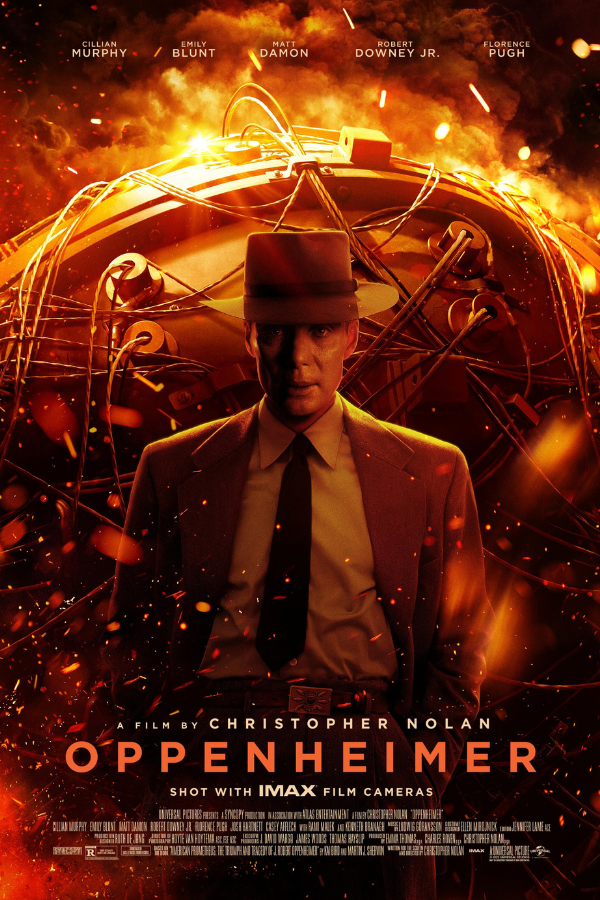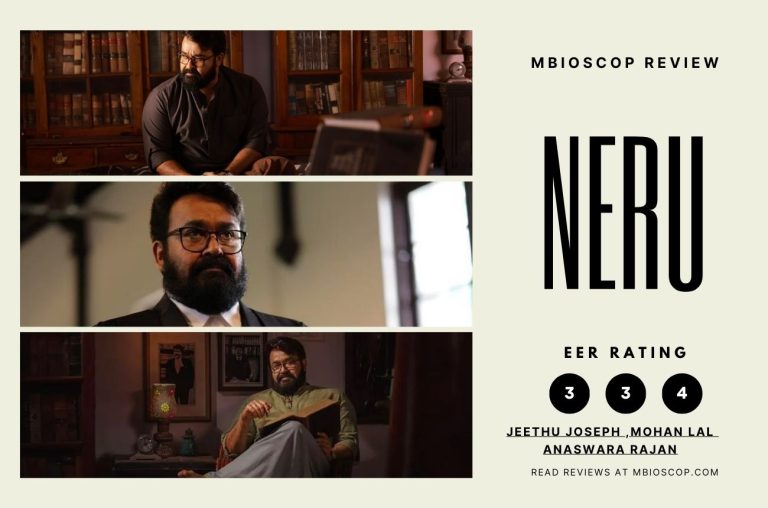Christopher Nolan, renowned for his cinematic prowess, takes center stage with “Oppenheimer,” a film that not only engages but immerses audiences in the nuanced details of storytelling. The choice of the 70mm film format becomes a character in itself, revealing the subtleties of dust motes in the air, the texture of an actor’s skin, or the intricate patterns of wood and fabric. These visual motifs, reminiscent of a grand painting, reach a fiery crescendo in the film’s slow-burn climax.
At its core, “Oppenheimer” is a cinematic adaptation of Kai Bird and Martin J Sherwin’s non-fiction masterpiece, ‘American Prometheus: The Triumph and Tragedy of J Robert Oppenheimer.’ Nolan, the master showman filmmaker, orchestrates an intimate milieu for this historical biography. The film unfolds with a sense of urgency, navigating the intricate web of Oppenheimer’s life, a narrative densely populated with personnel and historical events.
The narrative canvas painted by Nolan extends beyond the individual portrait of J. Robert Oppenheimer. It becomes a tapestry of embracing imperfections, realism about our identity and actions, and the inherent values in taking a chance on a maverick. In a world where historical tectonic shifts often occur within the confines of cramped offices or the desolate expanses of dusty plains, Nolan subtly critiques the prevailing Hollywood atmosphere during an ongoing writers and actors strike. “Oppenheimer” operates as a critique by stealth, lambasting the scowling middle-men, bureaucratic enforcers, politicians, and back-room operators who manipulate talent for immediate gains, only to swiftly discard them at the point of delivery.
Nolan’s attempt at objectivity in portraying Oppenheimer, the father of the atomic bomb, is underscored by a clear sense of awe for the man’s inquiring mind, poise, and his role as the “director” on the Los Alamos set. This set, conceived to develop a nuclear arsenal as a preemptive strike against geopolitical rivals, forms a backdrop that mirrors both the grandiosity of scientific ambition and the urgency of geopolitical tensions.
Cillian Murphy’s depiction of Oppenheimer becomes a cinematic tour de force. In the development of the atomic bomb, Oppenheimer’s deadpan assertion that the possibility of world destruction through an atmospheric chain reaction is “near zero” sends ripples of discomfort through his military-minded colleagues. Nolan treads carefully, not delving too deeply into the quantum physics behind this lofty endeavor. Unlike his previous works like “Interstellar” and “Tenet,” where sci-fi conceits rooted in real physics demanded mental gymnastics, “Oppenheimer” opts for simplicity, offering a more immediate and dramatic experience by keeping the science somewhat off-stage.
The film unfolds as a heady continuum, rushing through scenes that dissect the logistical intricacies of the Manhattan Project and culminating in the “Trinity” bomb tests. It weaves a narrative tapestry that draws intrigue from the anti-left political sentiments of the era, eventually escalating into ferocious opposition. Nolan paints Oppenheimer as someone who perceives politics in practical terms, not as an ideologue or firebrand concealing his beliefs.
The tension peaks in scenes where Oppenheimer strives to secure security clearance for potentially disreputable yet brilliant science colleagues. This war of words against those tasked with filtering out and eliminating possible spies becomes a riveting focal point. In the viewing experience, the film hurtles forward at the speed of Oliver Stone’s “JFK,” successfully managing to keep numerous narrative plates spinning simultaneously. Despite the prevalence of scenes featuring men engaged in dialogue within confined rooms, Nolan’s framing, blocking, and camera movements, while not overtly artistic, effectively serve the narrative purpose.
The ensemble cast, a colossal assembly roped in to narrate this historical saga, leaves no player feeling short-changed. While debates might arise about the sidelining of female characters like Florence Pugh’s communist lover and Emily Blunt’s tipsy wife Kitty in favor of male protagonists, both contribute essential moments. Emily Blunt’s stoic stand at a sham security hearing stands out as the film’s strongest moment, injecting backbone into Oppenheimer’s character at a crucial juncture.
However, the lion’s share of accolades rightly belongs to Cillian Murphy. His portrayal of Oppenheimer transcends acting; it becomes an extraordinary embodiment of a boyish passion for learning and discovery coupled with a deep, shrouded sense of paranoia and guilt. Murphy’s gaunt, greying, unglamorous features are accentuated by the giant white batons of cigarettes dangling from his lips. He reveals that his physical modeling drew inspiration from David Bowie’s character in Nicholas Roeg’s “The Man Who Fell To Earth.” This choice feels apt, aligning with the film’s theme of a genius outsider grappling with exploitation from the outset. Murphy’s performance, typically reliable, elevates to a different plateau, a muscular and effortlessly charismatic turn where he commands every frame he appears in.
As the film ventures into its final act, the focus shifts to the backroom machinations of Robert Downey Jr.’s character, Lewis Strauss, the one-time chair of the US Atomic Energy Commission. While it’s refreshing to see Downey outside the confines of a metal onesie, the arc feels somewhat manipulated to provide the film with a conventional closure. The witch trials are at full throttle, and Nolan can’t resist presenting Oppenheimer as a newly-moralistic martyr, a portrayal seemingly at odds with Oppenheimer’s own desires. Here lies a paradox – if Nolan were more objectively ambivalent about his subject, does it diminish the motivation to create the film? Does Nolan, in some way, see himself as the lone genius who narrowly escapes through the back door with a moral victory?
“Oppenheimer” resonates with Nolan’s magnum opus, 2006’s “The Prestige,” sharing a thematic core of a man creating a machine with the potential to destroy lives if placed in the wrong hands. What distinguishes “Oppenheimer” is its deliberate messiness, eschewing the hokily rigid plot schematics found in “Dunkirk,” “Interstellar,” and “Inception.” Oppenheimer, much like Bruce Wayne’s Batman, operates in a morally ambiguous domain, a self-starting mercenary wielding bottomless financial coffers to mete out punishment on perceived wrongdoers.
The film transcends the traditional biopic narrative, shifting its focus from offering a neat, cyclical storyline to navigating the twisty moral maze stemming from harnessing the power of the atom. Nolan’s writing, complemented by Murphy’s intuitive interpretation, brings forth this complexity with clarity. While “Oppenheimer” is not without its flaws, it ascends to the higher echelons of the biopic genre, unraveling hidden depths within the Nolan project. The film serves as an exciting harbinger, suggesting that audiences should brace themselves for the unexpected in Nolan’s future cinematic endeavors.























